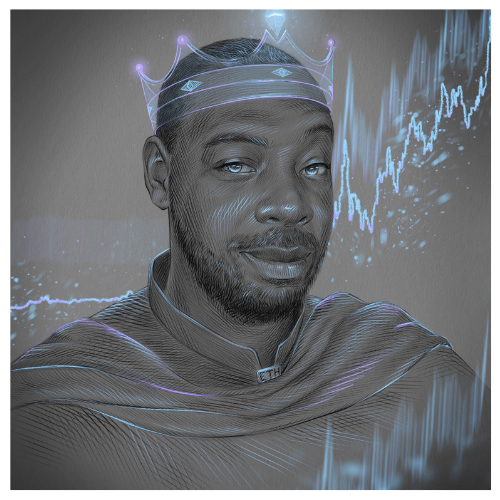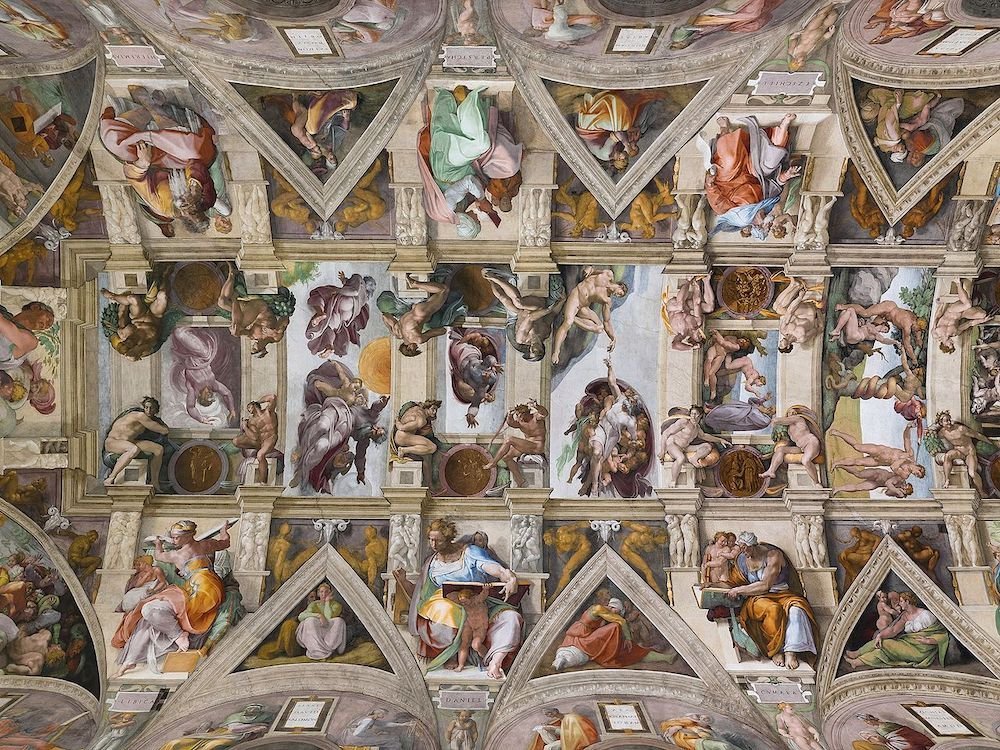Warrior’s Tale: Michelangelo di Lodovico Buonarroti Simoni
Greetings Warriors!
Today, let’s take a step back in time to talk about someone who redefined what it means to be an artist—a true legend in every sense of the word. His name? Michelangelo di Lodovico Buonarroti Simoni. You’ve probably heard of him as the sculptor behind David or the genius who painted the Sistine Chapel ceiling. But trust me, there’s way more to his story than just marble and frescoes. Michelangelo wasn’t just an artist; he was a warrior—one who fought against poverty, rivalries, impossible expectations, and even his own inner demons to leave a legacy that still inspires us centuries later.
Let’s dive in.
Michelangelo - David, 1504
BUY MY ART🖤
The Early Years of a Genius
Michelangelo was born on March 6, 1475, in a small Tuscan village called Caprese, Italy. If you’re imagining a family of wealthy patrons who nurtured his talent from day one, think again. Michelangelo’s childhood wasn’t exactly picture-perfect. His family was once prominent, a long lineage of bankers; but the bank had fallen on hard times and failed. His father, Ludovico, had a government post afterwards, but struggled financially, and his mother, Francesca, passed away when Michelangelo was just six years old.
Here’s something not many people know: Michelangelo didn’t fit into his family’s expectations. His father wanted him to pursue a respectable career, like becoming a notary, but Michelangelo had other plans. He was drawn to art—a career his family viewed as beneath their status. Imagine having to convince your own family that your passion isn’t just a hobby but your life’s calling. That’s where Michelangelo’s warrior spirit began to show itself.
At 13, Michelangelo became an apprentice to Domenico Ghirlandaio, a prominent painter in Florence. Within a year, his talent stood out so much that he caught the attention of Lorenzo de’ Medici, one of the most powerful figures in Florence. Lorenzo took Michelangelo under his wing, giving him access to the Medici court, a treasure trove of classical art and intellectual inspiration.
Michelangelo - Pieta, 1499
Michelangelo the Sculptor: Turning Stone Into Life
Michelangelo was barely 24 when he carved the Pietà, a breathtaking marble sculpture depicting the Virgin Mary cradling the dead body of Christ. Think about that—24 years old and already creating a masterpiece that would leave people speechless for centuries. Here’s a fun fact: Michelangelo actually carved his name into the sash of the Pietà after overhearing someone misattribute the work to another artist. It’s the only piece he ever signed. Talk about making sure you get the credit you deserve!
Then there’s David. Standing at an impressive 17 feet tall, this marble giant is not just a symbol of biblical heroism but also of human potential. Michelangelo sculpted it from a single block of marble that other artists had rejected as “flawed.” What others saw as useless, Michelangelo transformed into one of the greatest masterpieces in history. If that’s not a warrior’s mindset, I don’t know what is.
David, 1504
The Sistine Chapel: Art on a Ceiling
Now, let’s talk about the Sistine Chapel —arguably one of the most famous works of art in the world. What many people don’t realize is that Michelangelo didn’t even want to paint it. He considered himself a sculptor, not a painter, and was reluctant to take on the project. But when Pope Julius II insisted, Michelangelo had no choice.
Here’s where it gets wild: painting it was a grueling task. Michelangelo worked for four years, on a scaffolding. His hands became so stiff from holding a brush above his head that he wrote about how he couldn’t even read or eat properly. Yet, out of this physical and mental torment came something extraordinary—scenes from Genesis, including the iconic Creation of Adam.
Little-known fact? Michelangelo included dozens of anatomical details in the Sistine Chapel , hinting at his deep interest in human anatomy. For example, the shape of God’s cloak in The Creation of Adam is often interpreted as resembling a human brain, symbolizing divine intelligence. Genius, right?
BUY MY ART🖤
Sistine Chapel - 1512
Battling Rivals and Inner Demons
Michelangelo wasn’t just competing against himself; he had plenty of rivals. Chief among them was Leonardo da Vinci. The two were often compared, and while they never engaged in direct confrontations, their mutual disdain was no secret. Michelangelo was fiery and intense, while Leonardo was known for his charm and intellect. Imagine being under constant pressure to outdo not just yourself but another genius of your time.
But Michelangelo’s toughest battles were internal. He was known to be a perfectionist, often destroying his own work if it didn’t meet his impossible standards. He was also deeply spiritual, and his art often reflected his inner struggles with faith, morality, and the human condition.
Sistine Chapel
Michelangelo the Architect: Building a Legacy
You’d think after carving David and painting the Sistine Chapel, Michelangelo would call it a day. Nope. In his later years, he took on architecture, designing the dome of St. Peter’s Basilica in Vatican City. If you’ve ever seen that dome, you know it’s a marvel. Michelangelo took over the project when he was in his 70s—an age when most people are thinking about retirement. But for Michelangelo, it was another chance to leave his mark.
St. Peter’s Basilica in Vatican City
Fun Facts You Might Not Know
He Wrote Poetry: Michelangelo wasn’t just a visual artist; he was also a poet. Over 300 of his poems survive today, many of which explore themes of love, spirituality, and the struggles of the human soul.
He Studied Corpses: To better understand human anatomy, Michelangelo dissected corpses—a practice considered taboo at the time. This anatomical knowledge is why his sculptures are so lifelike.
He Lived Frugally: Despite his immense wealth, Michelangelo lived like a pauper. He was known to wear old clothes and hoard his money, much to the frustration of his family.
He Was Temperamental: Michelangelo’s fiery personality often got him into trouble. He argued with patrons, peers, and even popes, yet his genius always managed to keep him in high demand.
He Kept Working Until the End: Michelangelo was working on a sculpture, the Rondanini Pietà, when he died at the age of 88. Talk about dedication.
Bacchus -1497
His Contribution to the Art World
Michelangelo didn’t just create art—he redefined it. His ability to capture the human form with such emotion and precision set new standards that artists are still trying to reach today. Whether it’s the anatomical accuracy of David or the divine complexity of the Sistine Chapel, his work represents the pinnacle of Renaissance art.
Renaissance Man - Inspired by Leonardo Da Vinci
Michelangelo’s Warrior Spirit
Michelangelo’s life was a series of battles—against poverty, against societal expectations, against his own insecurities. Yet, he never stopped creating, never stopped pushing the boundaries of what art could be. He was a warrior not because he wielded a sword but because he fought with his chisel, his brush, and his mind. And in doing so, he proved that greatness isn’t born—it’s carved, painted, and built, one masterpiece at a time.
So the next time you see one of his works, remember the man behind the marble—the warrior who turned his struggles into something eternal.
What’s your favorite Michelangelo masterpiece? Let me know in the comments below, and don’t forget to share this story with someone who needs a little inspiration today. 😊

















